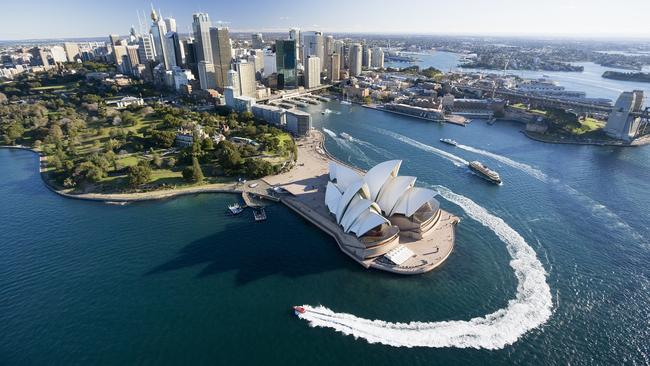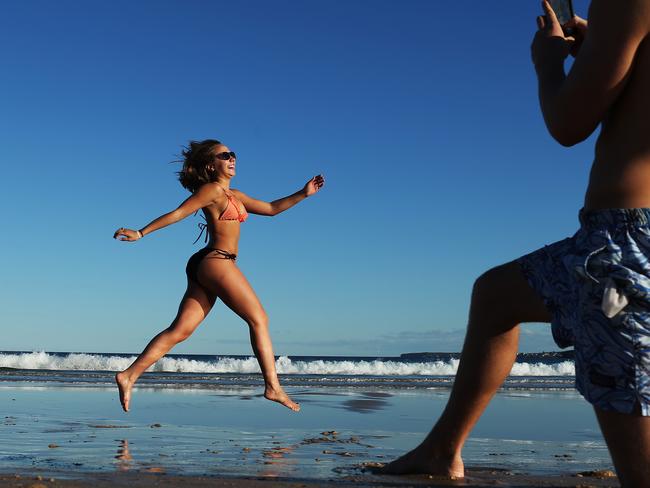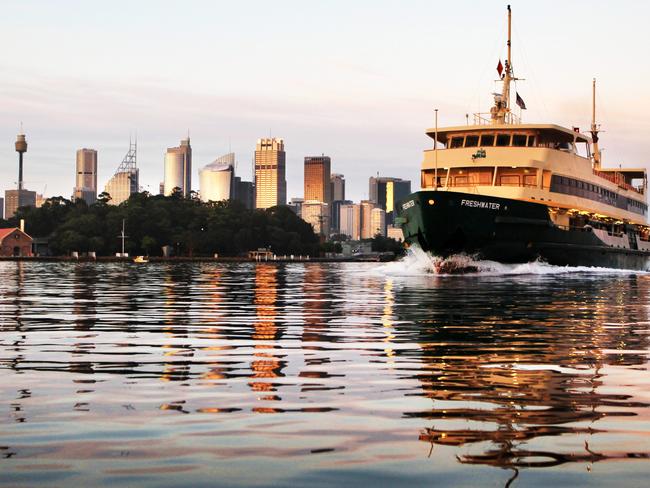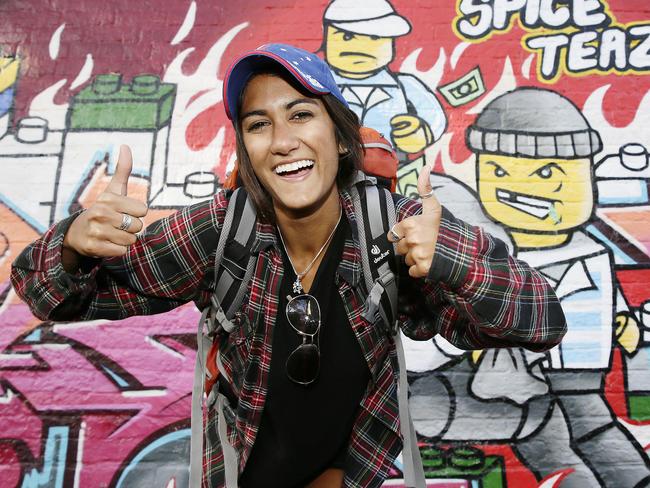Australia’s tourism industry needs innovation and big ideas to continue to grow
AUSTRALIA’s tourism industry is worth $17 billion but there’s more we could do to turbocharge the sector and ensure it is the next big thing for Australia.

NSW
Don't miss out on the headlines from NSW. Followed categories will be added to My News.
WHEN the resources sector faltered as Australia’s economic mainstay, there were worried questions about what would take its place to shore up the nation’s wealth and future growth.
How would the economy survive the end of the resources boom?
At the time, few realised the tourism sector was already stepping up as an economic powerhouse with its huge potential for growth. It already supported more jobs than the much vaunted mining sector.
In 2013-14, tourism directly employed more than 530,000 Australians compared with just under 270,000 for mining. It has been identified as one of five “supergrowth sectors” that can add $250 billion to the national economy over the next 20 years.
It has eclipsed coal as a national export earner. Inbound tourism generated $17 billion in the year to the end of May compared with coal’s $16.5 billion.
The visitor economy has huge potential for NSW. It supports more than 90,000 businesses and accounts for 159,000 direct jobs — it can do even more.

The tourism and visitor economy contributes more than $11 billion to the State’s gross state product alone. So with figures like that there is an opportunity to make sure that tourism “hums” in Sydney, delivering success not just for NSW, but for Australia.
The NSW Government is clearly pushing ahead with its ambitious infrastructure agenda with a mission to create a city that people want to both live in and visit: a city that is easy to navigate, has world-class facilities and an energy and vibrancy that keeps people coming back.
It should also be congratulated for being ambitious for growth in the visitor economy.
As a global city, Sydney is home to some of the world’s best-known facilities, top-class cultural institutions and a new international convention and exhibition centre that is emerging on the city skyline, fantastic beaches and parks — plus we enjoy a wonderful climate.
But we can’t ever rest on our laurels and there is, of course, always more to do if the Tourism 2020 goal of doubling overnight visitor spending is to become a reality.

Some of this is self-evident, such as making Sydney’s second airport at Badgerys Creek curfew-free from day one with connecting roads and rail link in place.
Others aren’t quite as obvious but, as a general truism, attracting overseas visitors is a natural consequence of getting things right on the domestic front.
Making Sydney a more liveable city for Sydneysiders, with better roads, public transport and amenities will also make it more attractive for visitors.
For example, a visitors’ Opal card would make it easier for visitors to travel around the city, supporting tourism growth.
Manhattan’s High Line public park built on a disused New York Central Railway freight line wasn’t conceived as a tourist attraction. It started as a local community movement to restore and repurpose some crumbling rail infrastructure as open space.
Innovation made it one of New York’s most popular new attractions for international visitors.

A similar innovative spirit could serve us well too. What could we do with our urban regeneration and how do we keep opening up our harbour, not just in the CBD but other parts of Sydney, for walking tracks, great places to eat and other attractions? We also need to identify the barriers that deter international visitors from coming here and remove them.
Reform of Australia’s visa system would be a good place to start.
China has enormous potential as a greater source market for Australia, so why price visas so much higher than competitor destinations?
There are other issues to be addressed. One is to change the perception that jobs in the hospitality and tourism sectors aren’t real or long-term jobs.
There’s a much too prevalent view that these are the jobs that young people have before starting their “real” career.
How wrong could that be?

Sydney’s competitive advantage is in areas such as the service industries, making tourism and hospitality fantastic career opportunities. A young person working at the front desk could rise to run the hotel chain. The young tour handler could end up running the company.
With its robust education system, we also have the potential to be the training centre for world tourism. Our TAFE and university systems are already training new generations of tourism and hospitality leaders.
Our strong education base has the capacity to make NSW a world leader in the field. It is a post-resources-boom export market waiting to be tapped.
There has to be lessons from successful parts of tourism, such as cruising. Ten years ago fewer than 200,000 Australians were taking a cruise holiday each year. Passenger numbers have since increased fivefold.

The target of one million Australians cruising a year by 2020 was achieved last year — a full six years early. Cruising now generates $4 billion a year in economic activity and supports more than 10,000 jobs. What did cruise tourism do to achieve 10 consecutive years of double-digit growth?
We transformed the quality of the product, dramatically increased capacity, attracted different demographics and opened about 40 new destinations in Australia and the Pacific.
The results have been stunning. Australia is the world’s fastest growing cruise market and we also have a world leading percentage of the population who have taken a cruise holiday.
There is no doubt that new technology such as intuitive booking engines have disrupted traditional tourism structures. But perhaps there is an opportunity to look for more ways to use technology to promote Sydney as the world-class destination it seeks to be.

There is scope for a dedicated Sydney online platform to make planning and booking a visit to the world’s most attractive harbour city a straightforward affair.
Whether they are young families from interstate or overseas, older couples, backpackers or people visiting on business, tourists would benefit from a one-stop platform that makes it easy to plan and execute a Sydney visit whether it is for three days or 30.
The tyranny of distance still works against us when international tourism is so competitive, so it will give us the edge in making it easier for a visitor to book their flights and accommodation, get ideas on how to fill their days with Sydney’s myriad of attractions and book them, as well as plan their local transport in Sydney even before they leave home.

In the spirit of Bradfield’s big conversations, we should be open to questioning ourselves further on whether there is more we could do to turbocharge tourism, confirm the sector as the next big thing for Australia with a capacity to drive innovation, international leadership and a sense of excitement.
Tourists are not just people who travel for pleasure. They are international students, sports fans and people visiting from interstate and overseas for conferences and business, yet we tend to think about them completely separately.
There is an opportunity to think about all the sources of tourists and look at whether what we offer can be better integrated across a range of sectors.
Ann Sherry AO is chief executive of Carnival Australia and has just been announced as Australia’s most influential woman.


